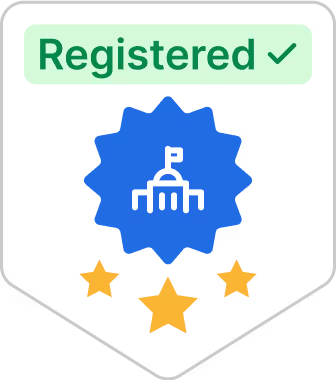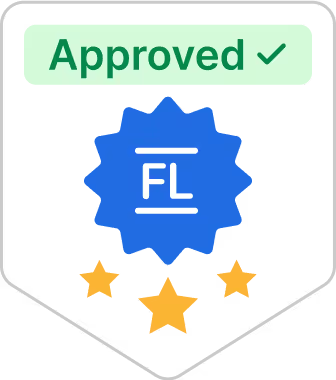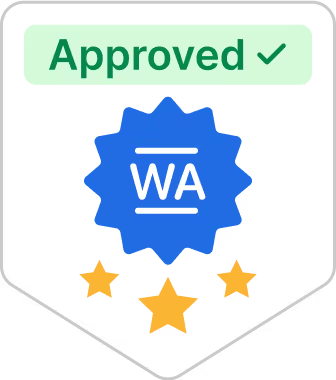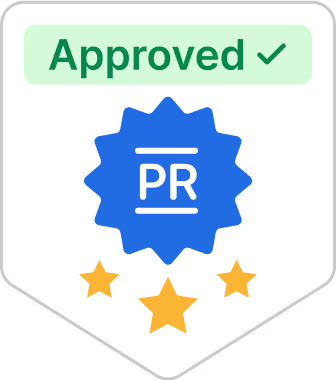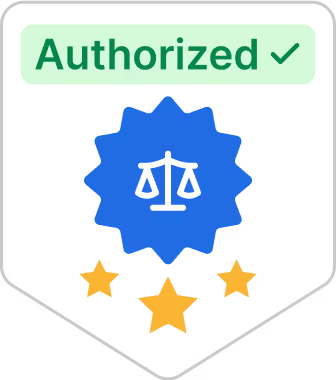How Long Does It Take To Get TSA PreCheck?

The Transportation Security Administration (TSA) is a government agency responsible for maintaining the security of transportation systems throughout the United States and around the world.1 Thoroughly screening airline passengers and their cargo at airports is intended to keep everyone safe on the ground and in the air.
In December 2011, TSA officially launched the TSA PreCheck program at McCarran International Airport in Nevada.1 In the years since, the intelligence-driven TSA PreCheck has expanded to include approximately 200 airports across the United States, and nearly 100 airlines participate.2
Whether you’re traveling nationally or internationally, TSA PreCheck allows you to bypass the long lines typically associated with TSA screenings at airports. You can also complete your TSA Precheck application with GOV+ in under five minutes. This article will provide all the information you need to know about TSA PreCheck, including TSA PreCheck enrollment. We’ll also answer the question, “How long does it take to get TSA PreCheck?” so you can plan accordingly if you’re planning to travel on an airplane in the near future and you’re interested in this program.
What is a TSA PreCheck?
Flying remains a popular way for people of all ages to travel. Whether travelers are visiting family and friends, going on a business trip, taking a much-needed vacation, or traveling for educational, religious, or extracurricular purposes, TSOs at airports across the country must do their due diligence and screen each and every passenger—that’s up to million passengers per day, which equates to more than 700 million every year—in addition to their checked items and carry-on items.3
Some airports are much busier and more crowded than others, but in general, it takes approximately 20 to 25 minutes to move through airport security. The Minneapolis-Saint Paul International Airport, for instance, advises travelers to be prepared to wait up to 50 minutes at the security checkpoint, especially during busy times.4
No matter where you’re traveling, waiting in line at the security checkpoint is a necessary step prior to boarding your flight. Transportation Security Officers (TSOs) working at airport security checkpoints will ask you to empty your pockets, separate your liquids and large electronics from your carry-on bag, remove your shoes, and walk through a metal detector or full-body scanner before allowing you to access your designated gate.
By making risk assessments about passengers well before their arrival, TSA PreCheck significantly expedites the TSA screening process. A successful TSA PreCheck enrollment denotes that you’re a known and trusted traveler. Instead of waiting in line at the security checkpoint and complying with all of the aforementioned security measures, you will join a separate security checkpoint line and, in doing so, allow TSA to focus on screening unknown passengers, including those who may be considered high-risk.
TSA reports that 99% of passengers enrolled in the TSA PreCheck program wait less than 10 minutes at the security checkpoint.2 Passengers who find waiting in line stressful should consider going through the TSA PreCheck enrollment process for a more pleasant travel experience.
The TSA PreCheck enrollment process
Before you begin pursuing the TSA PreCheck enrollment process, you need to make sure that you are eligible to apply. All U.S. citizens and lawful permanent residents can apply. Here you can find the TSA PreCheck requirements to see who is eligible for the TSA PreCheck. We encourage you to view their comprehensive list prior to initiating the TSA PreCheck enrollment process.
The TSA PreCheck application program requires a fee. If you’re interested in TSA PreCheck enrollment, you must pay a fee per applicant, which currently ranges in price from $77.95 to $85, depending on the enrollment provider.2 You can apply online or by visiting an enrollment location.
Before you proceed with the TSA PreCheck enrollment, be certain that you are using a reputable website. TSA notes that legitimate and official TSA PreCheck websites must end in “.gov.”5 Also, be sure that all the personal information you provide during the TSA PreCheck process is correct, including all names used, current and past. Providing inaccurate information could delay the approval of your application.
Upon approval, TSA will give you a Known Traveler Number (KTN). This is a number you’ll want to have on hand every time you make airline reservations. You’ll add the number to your booking to indicate that you are a TSA PreCheck participant, which means you can anticipate all the benefits that come from this program upon your arrival at the airport on the day of your departure. Your enrollment will also be noted on your boarding pass. It will be valid for 5 years.
Should you need to look up your TSA PreCheck number, you may do so by visiting the TSA PreCheck® KTN Lookup webpage.
TSA PreCheck benefits
Once you have successfully enrolled in TSA PreCheck, you should look for the dedicated TSA PreCheck screening lanes once you arrive at the airport. As a TSA PreCheck program participant, you will not need to remove your shoes, belt, 3-1-1 compliant bag, light jacket/outerwear, or your laptop from your carry-on bag.2
We also want to mention that if you have children 12 years old or younger, they may accompany you in the TSA PreCheck lane without restriction, but children 13-17 must have the TSA PreCheck logo on their boarding pass. Here is more information about TSA PreCheck and traveling with family members, including young children.
At this time, 90 airlines participate in the TSA PreCheck program, and the full list of participating airlines can be found here.
How long does it take to get TSA PreCheck?
Now that you know all the details surrounding TSA PreCheck and the TSA PreCheck enrollment process, it’s finally time for us to answer the question, “How long does it take to get TSA PreCheck?”
This is an excellent question, especially if you are planning a trip and are interested in bypassing the potentially long lines at the airport. On average, most TSA PreCheck applications are approved within 3 to 5 days. Some applications, however, can take up to 60 days.6 If you chose to receive updates on the status of your application, those updates will be shared via email, phone, or text.
If you are planning to enroll or renew in TSA PreCheck, we encourage you to do so at your earliest convenience. If you are renewing, it’s best to renew at least 60 days before your current TSA PreCheck indicator expires.
If you have any questions about TSA PreCheck or the TSA PreCheck enrollment process, contact GOV+ to learn more about the TSA process.
On a final note, even though TSA PreCheck exists to make your travels more pleasant, TSA makes clear that no individual can ever be completely guaranteed expedited screening due to the TSA’s unpredictable security measures (“both seen and unseen”) throughout the airport.2
TSA PreCheck continues to gain popularity among travelers, and for good reason: it allows you to fast-pass through airport security and allows you extra time to relax before going to the sky. For savvy travelers looking to save even more time and hassle, GOV+ can help you apply for or renew TSA PreCheck in minutes.
Sources:
1. Transportation Security Administration. Transportation Security Timeline.
2. Transportation Security Administration. TSA PreCheck®.
3. Department of Homeland Security. Eight Things You Probably Didn't Know About TSA.
4. Minneapolis-St. Paul International Airport. Security FAQs.
5. Transportation Security Administration. How Do I Apply for a TSA PreCheck?
6. Transportation Security Administration. How Long Does It Take to Get Approved?












